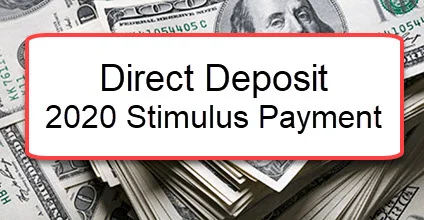Let's start with a scene you probably know well. It’s late, you're scrolling on your phone, the blue light painting your face in the dark. A headline flashes by, asking $2000 direct deposit from IRS this October? What to know about stimulus checks. For a split second, your heart leaps. You feel a jolt of hope, a flicker of relief in a world where every dollar counts. You click. You share. You ask, "Is this true?"
I've seen this cycle play out a thousand times, not just with stimulus checks, but with miracle cures, energy breakthroughs, and world-changing announcements. It’s a pattern. And as someone who has spent a lifetime studying how information flows through our digital systems, I have to be direct with you: The $2,000 stimulus check from the IRS this October is not real. There's no bill passed, no program in place. It’s a ghost in the machine.
But the most interesting question isn't if it's real. The question that truly fascinates me is why this specific ghost is so powerful and so persistent. What does its existence tell us about the new reality we all live in?
This isn't just about misinformation. We're looking at the mechanics of a Viral Hope Machine—a system where our deepest anxieties and desires are fed into an algorithmic engine that churns out incredibly compelling, emotionally resonant, and utterly false narratives. It works through a feedback loop. A person, struggling with bills, sees a whisper of a rumor. They amplify it because it's what they desperately need to be true. The platform’s algorithm sees this engagement—the likes, the shares, the frantic comments—and interprets it as important. So, it shows it to more people. This is the core of algorithmic amplification—in simpler terms, it means the system is designed to show you more of what gets a strong emotional reaction, whether it's true or not. And what's more emotionally potent than the promise of financial relief appearing out of thin air?
When I first traced the spread of this particular rumor, I honestly just felt a sense of profound sadness. It’s not a scam in the traditional sense; it’s a phantom built from collective wishful thinking. The IRS itself has warned against impersonators and text scams that prey on this exact kind of hope, trying to phish for your personal data. But the bigger, more systemic issue is the information environment that makes us so vulnerable in the first place. How do we build a world where our digital tools serve our search for truth, instead of just echoing our hopes back at us? And are the platforms that profit from this engagement under any ethical obligation to fix the engine?

So, if the $2,000 check is just noise, is there any real signal out there? Absolutely. And this is where the story gets more interesting, and frankly, more optimistic. Buried beneath the rubble of viral rumors are genuine, tangible efforts to get money into the hands of American families. They just don't make for sexy, clickable headlines.
Take the proposed American Worker Rebate Act of 2025. This is a real piece of legislation, submitted by Senator Josh Hawley, aiming to send between $600 and $2,400 to taxpaying families. It hasn't passed Congress, and its future is uncertain, but it represents a concrete idea being debated in the halls of power. This is the signal. It’s slower, more complex, and less immediately gratifying than a rumor, but it’s grounded in the actual mechanics of governance.
Then you have to look at the state level, where innovation is happening right now. New Jersey is sending out ANCHOR property tax relief payments, putting up to $1,750 back into homeowners' pockets. Other states like New York, Pennsylvania, and Georgia have been issuing their own inflation relief checks. These programs are real, they have application forms, and they are delivering funds. They are the tangible proof that government can and does act to provide financial relief.
The speed at which these targeted state programs can be deployed is just staggering—it means the gap between identifying an economic problem and delivering a data-driven solution is closing faster than we ever thought possible. This is the kind of progress that truly excites me. We're moving away from the blunt instrument of universal checks, which were a necessary emergency measure during the pandemic, toward a future of more precise, targeted financial support.
Thinking about the difference between the viral rumor and these real-world programs reminds me of the early days of the printing press. Suddenly, information could spread like wildfire, and with it came incredible knowledge and devastating misinformation in equal measure. We are living through the 21st-century equivalent of that moment. Our challenge isn't to shut down the press, but to learn how to read. How do we, as a society, collectively learn to distinguish the signal of real policy from the deafening noise of the Viral Hope Machine?
So, let's be clear. The rumor mill will keep grinding. Tomorrow, the phantom check might be for $1,702 or $2,400, powered by a new hashtag and a fresh wave of hope. But fixating on debunking each rumor is like playing a game of whack-a-mole. The real story, the one that truly matters for our future, isn't about a mythical stimulus check. It’s about us. It's about our urgent, collective need to develop a new kind of literacy for a new age. The ultimate challenge isn't economic relief; it's building the wisdom to navigate a world saturated with information, to find the truth, and to act on it. That’s the breakthrough we really need.